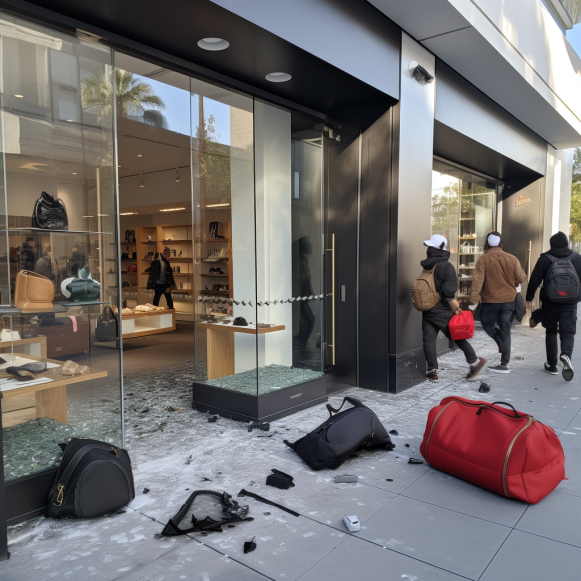Here’s how San Jose’s smash-and-grab prevention funds will be spent

Much of the money will go towards salaries and automatic license plate readers
San Jose’s police department plans to spend millions on salaries and a controversial surveillance technology to combat smash-and-grab crimes, which have become a major concern for public safety and economic vitality throughout California.
More than half of San Jose’s $8.4 million in funds will go toward salaries, benefits, and overtime for a group of officers devoted to retail theft prevention as part of Gov. Gavin Newsom’s injection of over a quarter-billion dollars in state money.
Another $3.1 million will be spent on automatic license plate readers, which supporters claim will help police quickly identify criminals but have raised privacy concerns.
The remaining $500,000 will go toward hiring an evaluator to assess the effectiveness of the crime-fighting technology, as well as training and computer supplies.
“I’m hopeful that this will have a significant impact in the future,” said Rachel Michelin, President of the California Retailers Association, who helped lobby for the state funding to be allocated to local law enforcement. “I believe we’re making significant progress against organized retail crime.” The challenge is determining how (the funding) is used for retail theft and shoplifting, which will be interesting to watch.”
Smash-and-grab crimes, which typically involve a group of people charging into a store to overwhelm security and staff before fleeing with a handful of merchandise, prompted Gov. Gavin Newsom to announce the largest-ever investment in combating organized retail crime on Sept. 14: $267 million.
Other Bay Area cities such as Fremont, Palo Alto, and San Francisco also received funding. Oakland missed the state’s application deadline.
The incidents are frequently widely shared on social media via video clips, and they have played a role in igniting a state-wide debate about crime.
While some argue that the thefts are a result of California’s stark inequality and a lack of economic opportunity, others see the smash-and-grab incidents as proof that the criminal justice system has become too lenient toward certain offenders.
Retail theft has also forced big-box retailers like Target to close a number of locations, including one in San Francisco, in recent weeks. Other pandemic-related trends, such as the shift to online retail and labor shortages, are also being blamed for the closures.
According to state Department of Justice data, Santa Clara County had the second-highest number of shoplifting incidents in 2022 among the five core Bay Area counties, with Alameda County ranking first.
Last week, a 27-year-old Nevada man was arrested in connection with a smash-and-grab robbery at a Gucci store in the Westfield Valley Fair mall. Purses and other merchandise totaling $50,000 were stolen. Police video of the incident shows a group of five people in black sweatshirts forcing their way into the luxury store for only 20 seconds before fleeing with the stolen items.
Employee Hamza Musid of Santa Clara Smoke Shop on East Santa Clara Street in downtown San Jose said his store has been the victim of a rash of thefts over the years.
“They just come in and grab sometimes,” Musid, who has been working at the shop for about two years, explained. “They usually come here for the money.” They occasionally come in and take a large quantity of products.” He claims that a car backed into the shop last year in an attempt to break through the storefront.
“More funding would always be useful,” Musid stated. “It’s simply how they use it.” You could give them a million dollars. You could give them a billion dollars. If they actually have a set plan where they can stamp it and get it approved, I’m all for it.”
Others are skeptical that the money will make much of a difference.
According to Simon, the funds would be better spent assisting small businesses in hiring more employees, including security guards, “who can discourage less serious thieves.”
San Jose police spokesperson Stacie Shih said in a statement that organized retail theft is a “growing trend” that is affecting the city’s businesses and community.
“With the goal of curtailing this regional problem, our Department looks forward to utilizing this grant, given the personnel constraints we are facing,” Shih said in a statement. “The allocation of these funds were made by taking into account realistic staffing numbers, the current trends of criminal activity related to organized retail theft, and where we would get the best results.”
On October 24, the San Jose City Council will vote on how the state funds will be spent.




